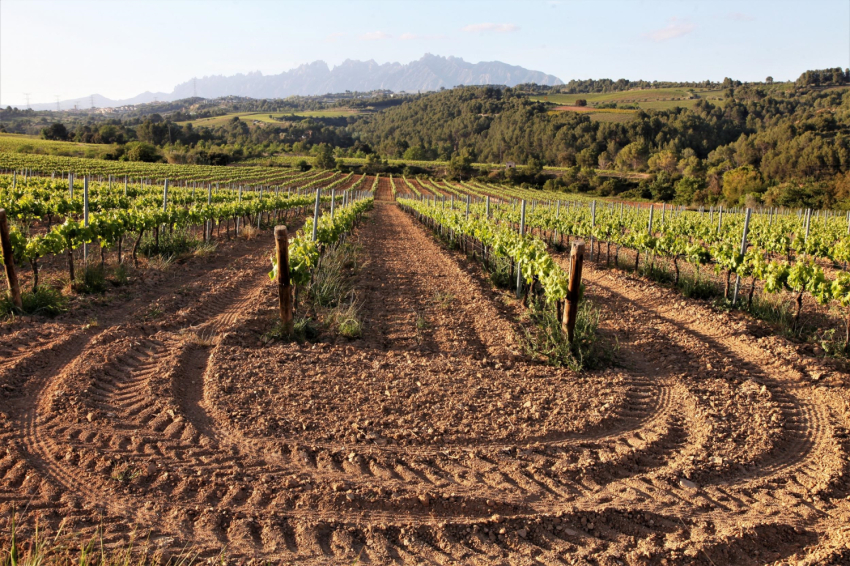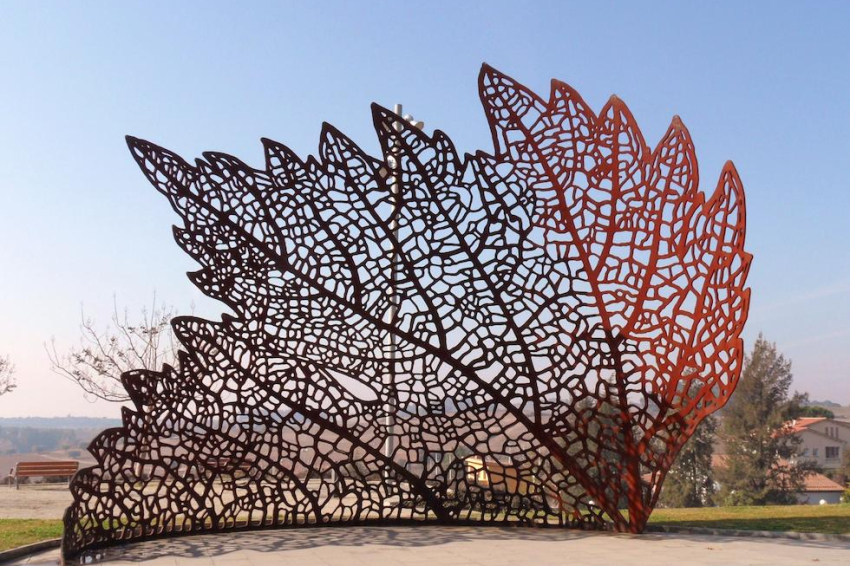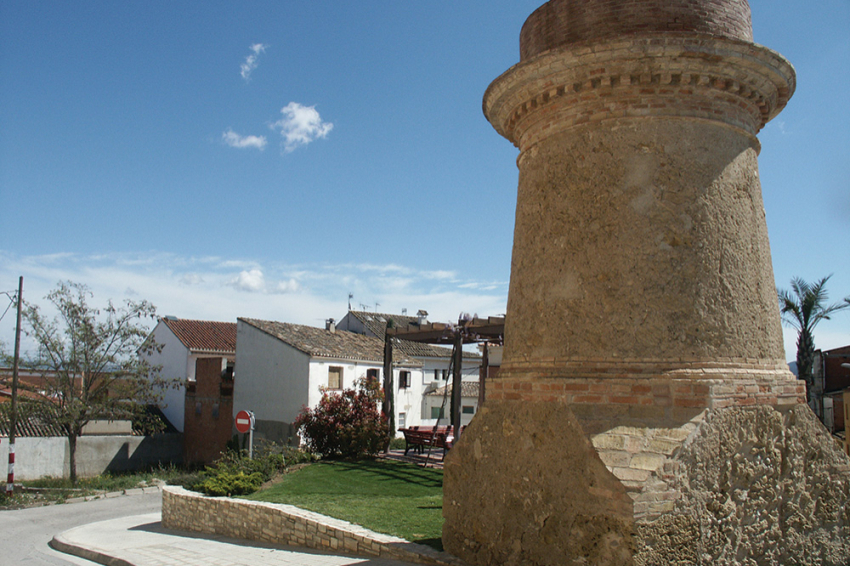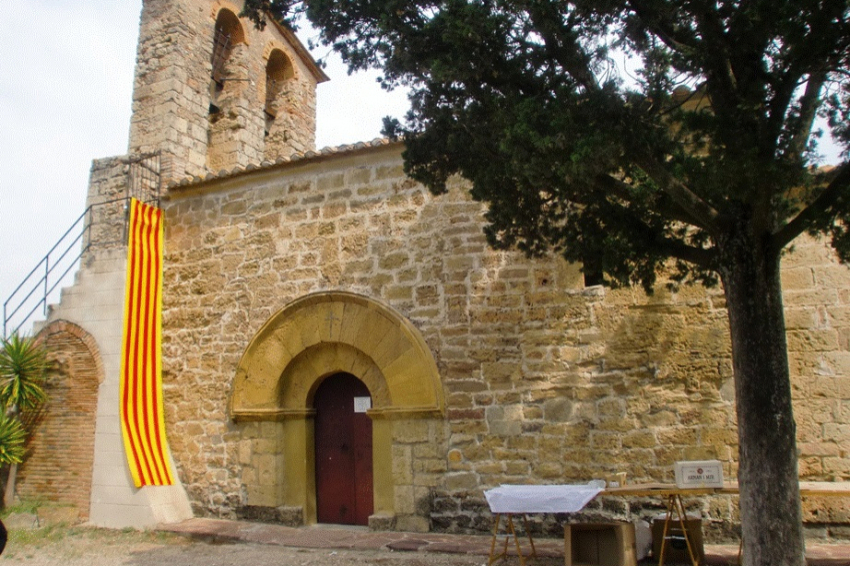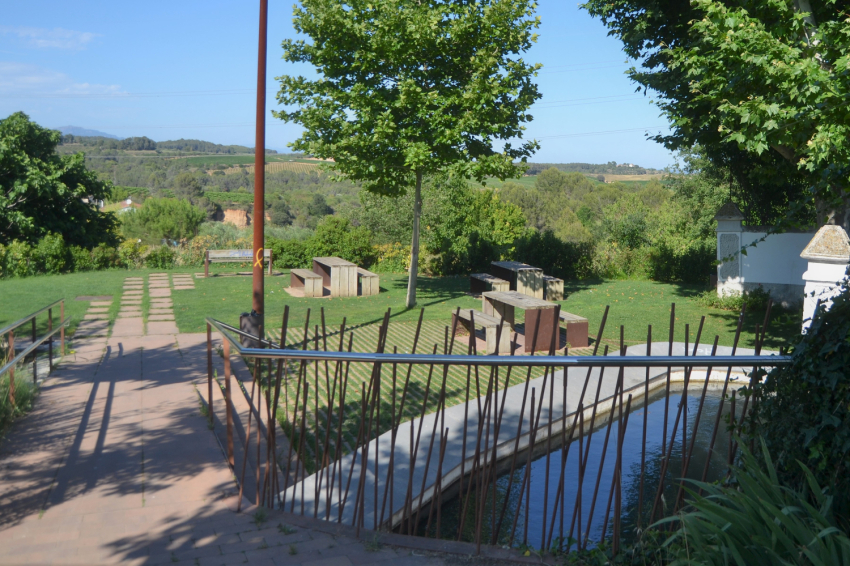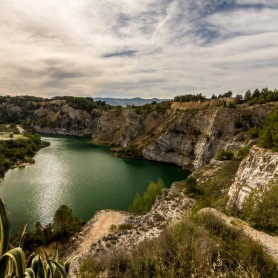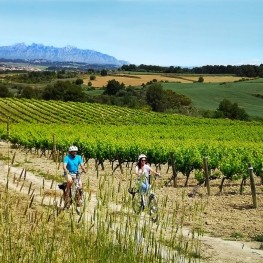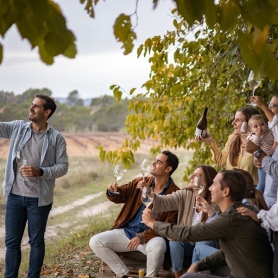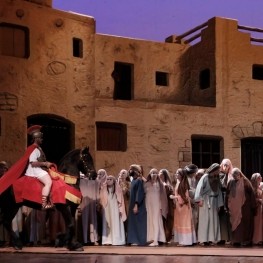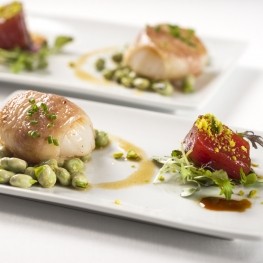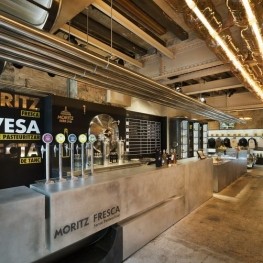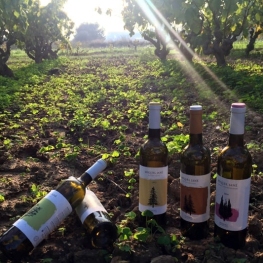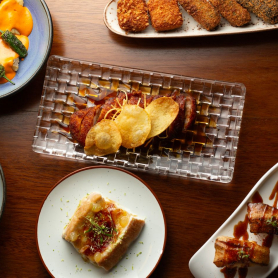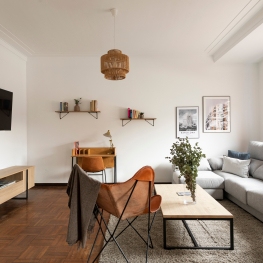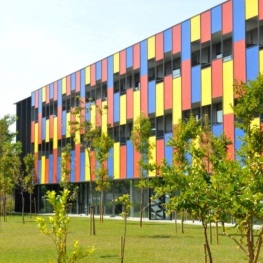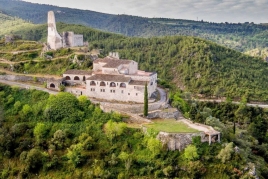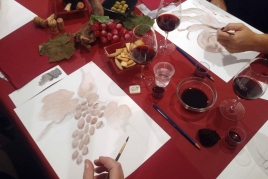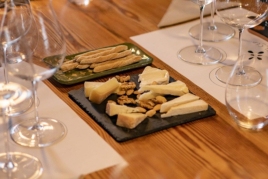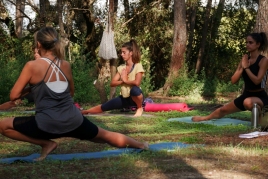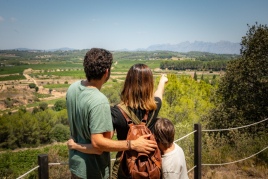Sant Llorenç d'Hortons
We encourage you to visit Sant Llorenç d'Hortons, a welcoming village located northeast of the Alt Penedès region, in the heart of a land marked by vineyards and the tranquility of rolling landscapes. A place where people are cared for and its natural environment, dominated by small wooded hills and cultivated fields that change with the seasons, is proudly preserved. In the valleys, near streams and springs, vegetable gardens still exist, bringing the agricultural tradition to life.
The municipality is made up of several towns with their own distinct identity: in addition to the historic center of San Lorenzo, you'll find Bebida Baja, Sant Joan Samora, Torrentfondo, Viña del Pollo, Can Bargalló, and Grandet. Every corner has its own charm and invites you to discover it.
The main activity remains agricultural, with vineyards producing prestigious wineries and cavas. But the town has also grown and diversified, and today hosts small industries that take advantage of its strategic location, just 45 km from Barcelona.
Sant Llorenç d'Hortons is much more than nature and tranquility: it is a living heritage site. With more than 200 listed buildings, documents, objects, and natural landscapes, the town is also the setting for festivals with their own unique identity, such as the Festa Major and the Terrazel, held on August 10th. The latter symbolizes Zeal for the Earth, a tribute to nature and our way of life.
If you enjoy outdoor activities, you'll find the perfect place here. Sports are part of everyday life: popular hikes, Nordic walking, trail training, and races like the Carrera de la Viña or Caco invite you to get active and enjoy the surroundings. We also have facilities like the sports center and the municipal swimming pool, spaces designed for everyone.
History
Historically, Sant Llorenç d'Hortons has belonged to the municipality of Gelida Castle since medieval times, and is made up of several farmhouses, some of which are still preserved. The oldest, known as Casa Vella, dates back to the 13th and 14th centuries, although the majority date from the 16th and 17th centuries and have been renovated in later periods.
These farmhouses were organized into two parishes. Documents of a church with a cemetery, separated and dedicated to Sant Llorenç, are already available in 945. Romanesque remains of this church can still be seen. The other church, also Romanesque and in good condition, is Sant Joan Samora, documented in 1080.
In 1818, both parishes separated from the Gelida area to form an independent municipality. The need to establish tenant farmers and vineyard workers from the 18th century onward, coinciding with the expansion of winemaking in the Penedès, led to the formation of the current population centers, among which Sant Llorenç and Sant Joan Samora stand out, located near their respective churches.
Places of interest
Church of Sant Joan Samora
The Church of Sant Joan Samora, first documented in 1080, is a magnificent example of Catalan Romanesque architecture. Despite this date, it is believed the church could be even older.
In its early days, the church served parish functions. However, as the population declined, it became a suffragan, first of Sant Pere de Gelida (from 1304) and later of Sant Llorenç d'Hortons, from the 15th century onwards. In the 16th century, this church served several nearby farmhouses, such as Can Almirall, Can Carafí, Can Bosc, Can Raimundet, Casa Gran and Casanovas, as well as the scattered inns and houses of Bebida Alta and Bebida Baja.
The small town of Sant Joan Samora began to form in the 19th century, around a single street with eight houses, known as the Can Carafí hamlet.
The Windmill
In the Plaza del Molí de Vent, you'll find a unique hydraulic engineering complex consisting of three elements: the mill tower, the water mine, and a large underground reservoir. This work, dating from the first half of the 19th century, was groundbreaking for its time and is today a technological benchmark for the municipality.
The project, promoted by the owner of Cal Santjust, aimed to bring water to the family's new home. To achieve this, a shaft extending over 300 meters to the Font de Cal Santjust was built, along with a large-capacity reservoir and a windmill with wooden blades that pumped the water to the reservoir.
The entire complex was built with traditional materials such as handmade brick and local stone, originating from the sea 16 million years ago. Also noteworthy is the innovative use of the flat brick vault to cover the underground reservoir.
Today, this space represents an example of the sustainable use of resources, such as wind energy, and demonstrates how the technology of the time transformed local life. The Windmill is not only a testament to the past, but also a symbol of development and modernity in Sant Llorenç d'Hortons.
The Pàmpol
Inaugurated in 2006 in the former Era d'en Peret, El Pàmpol is an 8-meter-high monumental sculpture that symbolizes the vineyard, a symbolic crop in the Penedès region. Shaped like a vine leaf in autumn, the piece offers a glimpse of the landscape through its veins, becoming a privileged vantage point and a meeting place for locals and visitors.
The sculpture, made of Corten steel by renowned Basque sculptor Juanjo Novella, fuses agricultural tradition and contemporary art. Its style, marked by visual lightness and empty spaces, blends seamlessly with the natural surroundings.
The Pàmpol not only represents the present and future of the wine-growing region, but also pays homage to the past: wheat, a key crop until the end of the 20th century, was once pounded in the same area. Thus, this spot becomes a symbolic crossroads between rural memory and the current development of Sant Llorenç d'Hortons.
The first summer resorts
Between 1930 and 1932, Sant Llorenç d'Hortons saw the rise of its first summer resorts, a group of Noucentista-style houses inspired by garden cities such as those in Gelida, Sitges, and Vilanova. These constructions marked a turning point in the town's urban landscape.
The transformation began with the opening of the Gelida road (1905) and the development of new streets such as Mestre Cugat, Canals, and Anselm Clavé. The area, previously neglected, was revitalized thanks to the initiative of Josefa Bonastre Parera and the project of municipal architect Josep Ros.
The first towers built were those by Ignasi Esteve, Ramon Ollé, and Villa Maria by Pere Cuscó, all designed by Josep Ros. Shortly after, the Palà tower, designed by J. Pujol Brull, and the Jacint Alqué tower were added, on the corner of Anselm Clavé and Santa Filomena streets.
The houses not only brought a new architectural model to the town, but also symbolized the arrival of bourgeois summer vacations and the desire to give the town a more modern and healthy feel.
Come to Sant Llorenç d'Hortons. Discover its essence, experience its people, and be captivated by the landscape and traditions that make us unique. We look forward to seeing you!
Nearby routes
See all routes »- 150 years of the railway from Tarragona… (a 4.4 km)
- Path of the natural parks (a 4.4 km)
- Modernism in Vilafranca del Penedès (a 4.4 km)
- Monumental trees of Catalonia (a 5.8 km)
- The river road in the Alt Penedès (a 5.8 km)
What to do
Bikemotions, enoturisme al Penedès
Subirats (a 9.5 Km)Different proposals to enjoy the Penedès pedaling through vineyards and discovering small…
Vins El Cep
Sant Sadurní d'Anoia (a 2.2 Km)Can Llopart de les Alzines, an estate dating from 1499 and surrounded…
La Passió d'Esparreguera
Esparreguera (a 8.3 Km)The Passion of Esparraquera is a show with great dramatic and technical…
Where to eat
Restaurant Windsor
Barcelona (a 28.8 Km)The Windsor restaurant, located in Barcelona, is a benchmark of contemporary Catalan…
Fàbrica Moritz Barcelona
Barcelona (a 29.8 Km)The Moritz Factory Barcelona is a unique space, divided into three floors,…
Bodega Miquel Jané
Font-rubí (a 15.8 Km)Discover the world of wine with our comprehensive viticulture and oenology courses,…
Taverna ümet
Sabadell (a 25.1 Km)Taverna Ümet is a restaurant in Sabadell offering creative tapas and flavorful…
Where to sleep
AB Apartment Barcelona
Barcelona (a 29.5 Km)AB Apartment Barcelona is an agency specializing in short and monthly apartment…
Molí Blanc Hotel Igualada
Jorba (a 24.5 Km)Old paper mill dating from 1750, built on the banks of the…
Alberg Centre Esplai, Fundesplai
El Prat de Llobregat (a 27.4 Km)Discover the Centro Esplai hostel, in the municipality of El Prat de…
Hotel Hyatt Regency Barcelona Tower
Barcelona (a 27.3 Km)The Hyatt Regency Barcelona Tower hotel will offer you an unforgettable experience…
Events
Experiences
Yoga and tasting among vineyards with Vins el Cep
Vins El Cep (Sant Sadurní d'Anoia) (a 2.2 Km)


